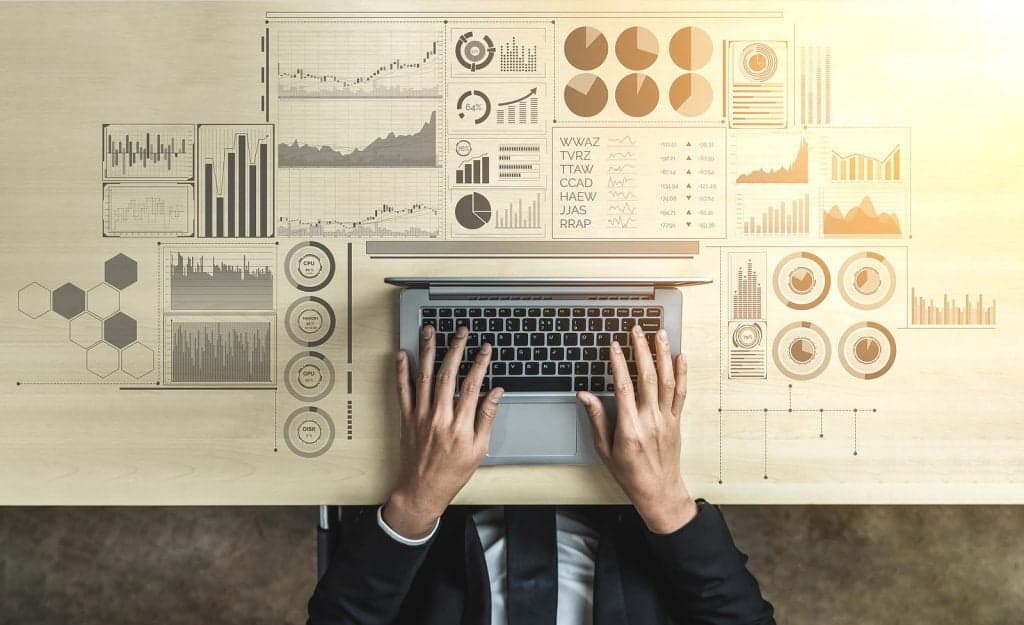How Big Data Works – A Comprehensive Introductory Overview.
Table of Contents
ToggleLook at the hype surrounding the use of Information Technology in business and the world at large. You’ll doubtless hear a lot about the importance of data analytics and the uses of big data.
But what exactly is big data? Who uses big data? And how does it work?
We’ll be providing some answers in this article.
How Big Data Works: The Basics
Until fairly recently, most of the information produced and managed by people working in organizations across the globe had a specific structure — one that could usually be represented by the rows and columns of a spreadsheet or relational database. But as technology and the scope of human activity have expanded, much of the information we now have to deal with takes a semi-structured or unstructured form. Things like audio streams, video, text, photographs, or social media exchanges fall into these categories.
And there’s a lot of this information around. As of April 2020, a single minute on the internet sees:
- 347,222 posts published on Instagram
- Consumers spending $1,000 000 online;
- People sending almost 41 million text messages via WhatsApp
- Amazon shipping 6,659 parcels.
How Big Data Works: understanding what it is! Big data is a blanket term for the dynamic, often extremely large sets of information generated by people, machines, and tools. Big data sources encompass information from social media, machine data, smartphones, tablets, video, voice recordings, and the preservation and logging of structured and unstructured data.
Conceptually, big data has certain core characteristics, most commonly denoted by the three Vs:
- Volume: The vast amounts of information created in comparison to traditional data sources.
- Variety: Big data comes from a multiplicity of sources and can take numerous formats.
- Velocity: Data is generated at rapid speeds and must be handled at a similarly fast pace.
More recently, analysts have added other characteristics to this roster, notably Veracity (a measure of the reliability and accuracy of the information) and Value (which speaks to the big data benefits that accrue to business and society).
The History of Big Data
The term ‘Big Data‘ has been around since the early 1990s, with most people crediting John R. Mashey (who worked at Silicon Graphics during that period) for making the term popular. However, attempts to aggregate and learn from large repositories of information date back to ancient times. For example, during the time of Alexander the Great (circa 300 BC), the ancient Egyptians sought to capture all existing data in the library of Alexandria. And military scientists of Ancient Rome used to analyze combat and deployment statistics to determine the optimal distribution for their armies.
The contemporary age of big data can be roughly subdivided into three main phases.
Big Data phase 1.0 was firmly rooted in early database management, which relied heavily on the storage, extraction, and optimization techniques common to data stored in Relational Database Management Systems (RDBMS).
During this period, database management and data warehousing were the core components, with techniques such as database queries, online analytical processing, and standard reporting tools laying the groundwork for the foundation of modern data analysis.
From the early 2000s, the internet and the World Wide Web were the catalysts for Big Data phase 2.0. While HTTP-based web traffic created a massive increase in semi-structured and unstructured data, companies like Yahoo, Amazon, and eBay started to quantify customer behavior by analyzing click-rates, IP-specific location data, and search logs.
With a big data structure that was now increasingly varied, organizations needed to find new management strategies, analytical approaches, and storage solutions. And when the social media platforms exploded onto the scene, the demand for new technologies and approaches for
what to do with big data grew even further.
These issues persist to some extent, but Big Data phase 3.0 is emerging as the mobile era of big data evolution. Big data from mobile devices gives organizations the option to analyze behavioral data (such as clicks and search queries) and store and analyze location-based data such as GPS information. At the same time, the continuing development of sensor-based internet-enabled devices is swelling the data sphere and increasing the potential for big data analysis to drill down even further, with the Internet of Things or IoT devices generating zettabytes of data every day.
How Big Data Works: New Ways of Handling Information
With a diverse range of big data sources such as streaming and static media, the cloud, social platforms, IoT, and databases contributing to the mix, new technologies and skill-sets are required for managing big data, analyzing and extracting value from it, and communicating the results of this analysis to relevant stakeholders.
The field of data science emerged from the need to find professionals capable of harnessing existing data sources, and creating new ones as required, in order to extract meaningful information and actionable insights. Practitioners in this arena require expertise in the business domain, effective communication skills, the ability to interpret results accurately, and the capacity to use any and all relevant statistical techniques, programming languages, software packages, libraries, and data infrastructure relevant to the task at hand.
Other big data professionals’ roles include big data analysts, big data engineers, big data developers, and big data architects. These individuals are collectively responsible for the design, implementation, monitoring, and management of big data systems and solutions.
How Big Data Works: The Importance of Data Visualization
It’s one thing for data scientists and big data tools to be able to identify trends, outliers, and patterns in data — but it’s quite another for them to communicate these findings to business and operational managers in a form that these (often non-technical) people can understand.
Data visualization provides a graphical representation of information that satisfies this need to communicate the results of big data analysis to those outside the data science lab. To do this effectively, data visualization must perform a delicate balancing act between form and function. The best tools and platforms can visually convey salient points, whether in a dashboard or a slide deck, enabling stakeholders to somehow leverage that information.
Common general data visualization types include charts, tables, graphs, maps, infographics, and dashboards.
The Future of Big Data
The majority of big data experts agree that the amount of generated data will continue growing exponentially in the future. Some estimates project that the global data sphere will reach 175 zettabytes by 2025. The increasing number of internet users doing everything online and the proliferation of connected devices and embedded systems are major contributing factors.
With public and enterprise cloud service providers like Amazon Web Services (AWS), Microsoft Azure, and Google Cloud Platform transforming how big data is stored and processed, experts also predict that the future of big data will be cloud-based. Hybrid and multi-cloud environments are seen as the future for the corporate deployment of big data projects.
So-called “fast data” — which allows for processing in real-time streams — is expected to gain importance. With stream processing technologies giving organizations the ability to analyze such information within as little as one millisecond, fast data will become a critical vehicle for delivering quick business value. The incorporation of evolving machine learning and artificial intelligence technologies into big data analytics tools is anticipated to fuel this trend.






